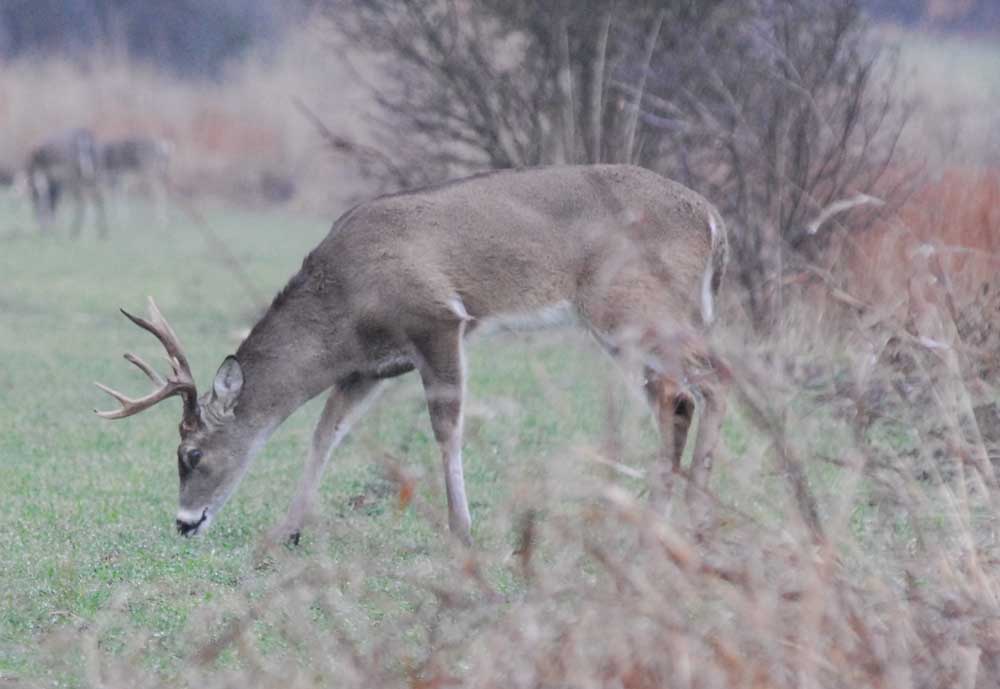Tunneling activity of mole crickets can be disruptive to many plants
Published 1:51 pm Friday, December 9, 2016

- Chad Gulley
Have you seen a strange looking insect that looks like a cricket with heavy armor? This is a mole cricket. The mole cricket is a member of the insect order Orthoptera, which is the same as crickets and grasshoppers. The mole crickets are a member of the family Gryllotalpidae.
Two species of mole crickets are common in Texas. The tawny mole cricket primarily feeds on grass roots, while the southern mole cricket feeds on predators and plants in an approximately 80- to 20-percent ratio. The southern mole cricket feeds primarily on other insects and earthworms as nymphs and adults. Mole crickets are not medically harmful to man and animals.
The mole cricket has front legs that are enlarged and shovel-like in appearance, and are modified for digging. Adult mole crickets are cylindrical, reaching nearly 1.5 inches long and are golden to dull brown in color. They also have a shield-like segment just behind the head.
Mole crickets are poor jumpers but run quickly and can fly at night. Young mole crickets resemble the appearance of the adults but are smaller and do not have fully developed wings. These insects go through simple metamorphosis from the egg to nymph to the adult mole cricket.
Winter months are spent as partially grown nymphs and as adults. In spring and early summer, mating and dispersal flights occur. Afterwards, females lay their eggs in cells dug in the soil. The females lay their eggs from April in South Texas to June or July in North Texas. Eggs hatch in about two weeks and nymphs develop throughout the summer months. One generation is produced per year. Most tawny mole crickets over-winter as adults while the southern mole cricket over-winters as a nymph.
The mole cricket is a soil insect. It burrows under the soil and feeds at or slightly below the soil surface on roots, tubers and stems. The mole cricket may be seen in pastures, gardens, field crops and turfgrass. Infestations are usually localized. They prefer sandy soils and are often found in golf courses and live in the half-inch diameter burrows they use to tunnel around in. The mole cricket is most active at night.
The tunneling activity can be very disruptive to many plants. This tunneling loosens the soil around the root system, causing roots to dry out. Bermudagrass and bahiagrass are most often affected by this tunneling. St. Augustine grass is not as affected by the mole cricket’s tunneling. On a golf course, the tunneling can create issues for putting greens. Other grass species, including zoysia, centipede and bentgrass, also may be damaged by the tunneling activity.
The tunneling is similar to that of the mole, thus the name “mole crickets.” Mole crickets may tunnel up to 20 feet per night when the soil is moist. The tunneling is where the mole cricket is searching for insect prey or where they come to the surface to run about freely.
Early treatment while mole crickets are small nymphs is the preferred method of control. Once they become adults and have the ability to fly, control is more difficult. Scout the lawn or areas you suspect have mole crickets. May through July in our area is when most mole cricket nymphs are small.
In the area where you see tunnels, a soapy water flush mixture of one tablespoon liquid dish soap to one gallon of water poured over the area should flush them out. The mixture of soap and water irritates the nymphs and flushes them out to the surface for counting and identification.
Products containing the active ingredients bifenthrin, fipronil, indoxacarb, and thiamethoxam are effective options for controlling mole crickets. Read and follow all label directions when applying any of these products. Other products also may work well if applied in a timely manner. A complete list of products may be found in the Extension publication “Weed, Insect, and Disease Control in Turfgrass,” publication number SC-039, by Casey Reynolds, Matt Elmore, Young-Ki Jo, Extension turfgrass specialists; and Diane Reynolds, research associate entomology.






